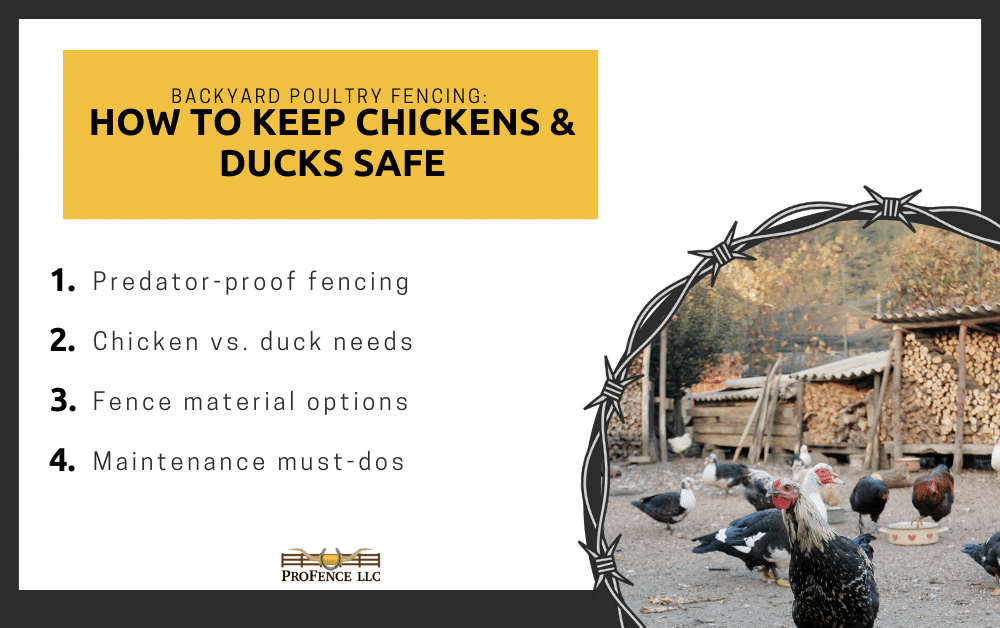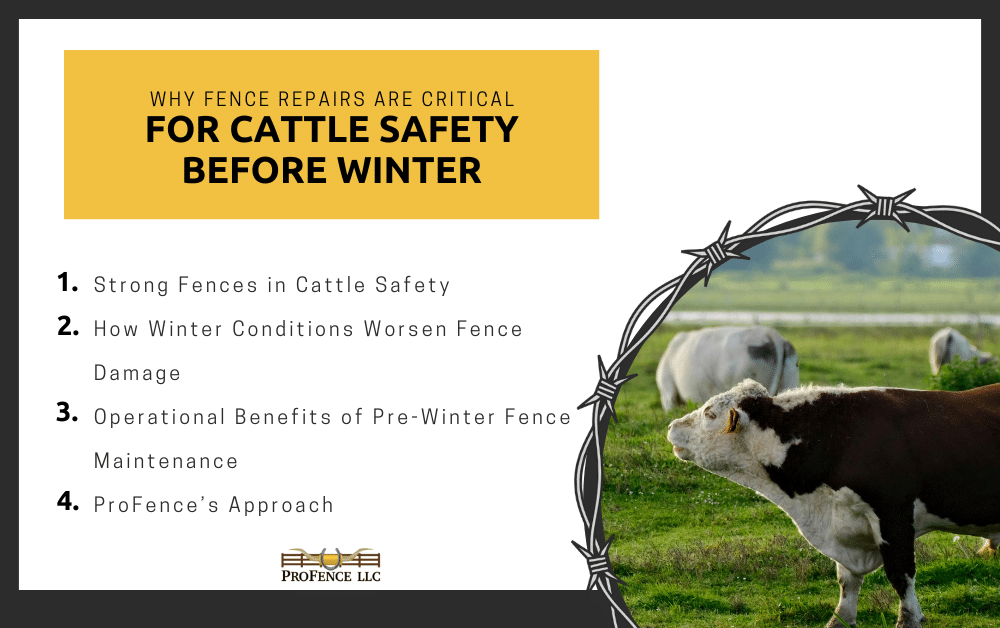Backyard poultry has become more popular than ever. Whether you’re raising a few hens for fresh eggs or keeping ducks for pest control and companionship, ensuring their safety is non-negotiable. But while coops often get the most attention, it’s the fencing that plays a vital role in keeping predators out and your birds safely contained.
In this guide, we’ll walk you through everything you need to know about backyard poultry fencing—from choosing materials to protecting against threats—so you can build a secure and stress-free environment for your flock.
Why Backyard Poultry Fencing Matters
Even in suburban neighborhoods, predators are a real concern. Raccoons, foxes, hawks, stray dogs, and even snakes can pose a threat to poultry. At night, most birds are vulnerable while they roost. During the day, ducks and chickens alike can be caught off guard while foraging.
Chickens and ducks are more curious than you might think. Gaps in fencing, improperly latched gates, or low walls can quickly turn into escape routes. Wandering birds often end up in neighbors’ gardens—or worse, in harm’s way. Proper fencing isn’t just about protection—it also simplifies management and keeps the environment clean and controlled.
Understand the Needs of Your Birds
Chickens like to roost high and often attempt short flights, especially lighter breeds like Leghorns. Ducks, meanwhile, love water and stay closer to the ground. Their waddling gait and low posture make them more vulnerable to predators if fences aren’t properly secured near the base.
Also, bird behavior varies. High-strung breeds will constantly test the perimeter. Heavy-footed ducks can trample down fencing over time if not reinforced. These traits should influence your fencing design.
Types of Backyard Poultry Fencing (Pros and Cons)
Here’s a deeper look into your best options:
Welded Wire and Hardware Cloth
- Best use: Stationary runs, coop windows, predator protection
- Why it works: It’s rigid and strong enough to prevent chewing
- Watch out: Pricier than chicken wire and less flexible for curves
Electric Poultry Netting
- Best use: Rotational grazing, pasture setups
- Why it works: Easy to move, deters predators with a shock
- Watch out: Requires regular maintenance, battery/power source
Chain-Link and Panels
- Best use: Permanent, multi-purpose fencing
- Why it works: Durable and long-lasting
- Watch out: Gaps need added mesh to keep birds in
Chicken Wire (Use with Caution)
- Best use: Interior partitions
- Why it fails: Easily chewed through by raccoons, dogs, or rats
- Watch out: Not suitable as primary fencing
Mobile vs. Permanent Fencing for Poultry
Mobile fencing like chicken tractors and duck pens are fantastic for small homesteads, especially when using regenerative grazing techniques. Birds get fresh ground daily, which improves their diet and cuts down on parasites.
For larger flocks or long-term setups, invest in permanent fencing. Bury wire to block diggers, build it tall for jumpers, and choose materials rated for outdoor exposure.
Building a Predator-Proof Setup
Predators are your birds’ biggest threat. Here’s how to reinforce security:
- Dig Barrier: Bury wire 12” down or lay an outward “apron” to stop diggers.
- Aerial Netting: Protect your flock from hawks and owls with mesh netting or zig-zag deterrent lines.
- Latch Upgrades: Raccoons can open basic latches—use carabiners or locking bolts.
- Motion Lights: Triggered floodlights can scare away night predators.
Fencing Height, Spacing, and Layout Tips
- Chickens: Minimum of 4 feet, with 6 feet ideal for active breeds
- Ducks: 2–3 feet usually sufficient, but go higher for predator protection
- Post Spacing: 6–8 feet apart for wire or mesh fencing
- Gate Width: At least 3–4 feet wide for easy access with wheelbarrows or feed
Plan your layout to include shaded zones, nesting access, and clean entry paths for maintenance.
Fencing for Mixed Backyard Birds
If you’re keeping chickens and ducks together, it’s important to design fencing that meets the needs of both. Chickens need height and roosting zones, while ducks require water access and low fencing to step over.
Zone the area into:
- Dry space for chickens
- Wet space for ducks
- Shared shelter with separate entry points
Use ½-inch mesh or hardware cloth around the base to serve both species and prevent escapes.
Common Fencing Mistakes and How to Avoid Them
Even experienced flock owners make fencing errors. Here’s what to avoid:
- Too Short: Chickens can fly; ducks can be snatched by jumping predators.
- Poor Ground Contact: Gaps let in weasels, snakes, or rodents.
- Cheap Latches: Raccoons will outsmart simple hooks.
- Chicken Wire for Exterior Use: It’s not made to resist determined predators.
- Neglecting the Fence Base: Always secure the bottom 6–12 inches against diggers.
Fencing Is More Than Just Wire
Backyard poultry fencing isn’t just about putting up a barrier—it’s about building peace of mind. Whether you’re protecting chickens from a neighbor’s dog or ducks from a lurking fox, the right fencing setup can dramatically reduce stress and bird loss.
Think of fencing as part of your flock’s long-term health plan. Well-secured birds are less stressed, more productive, and easier to manage. If you’re just getting started or planning an upgrade, consult with a fencing expert or visit your local farm supply store to explore options tailored to your setup.
Your birds rely on you to keep them safe. With a smart fencing plan, you’ll be ready.
Ready to Protect Your Flock the Right Way?
At ProFence, we specialize in secure, long-lasting fencing solutions tailored for backyard poultry. Whether you’re raising chickens, ducks, or both, we’ll help you choose the right fence to keep predators out and peace of mind in.







